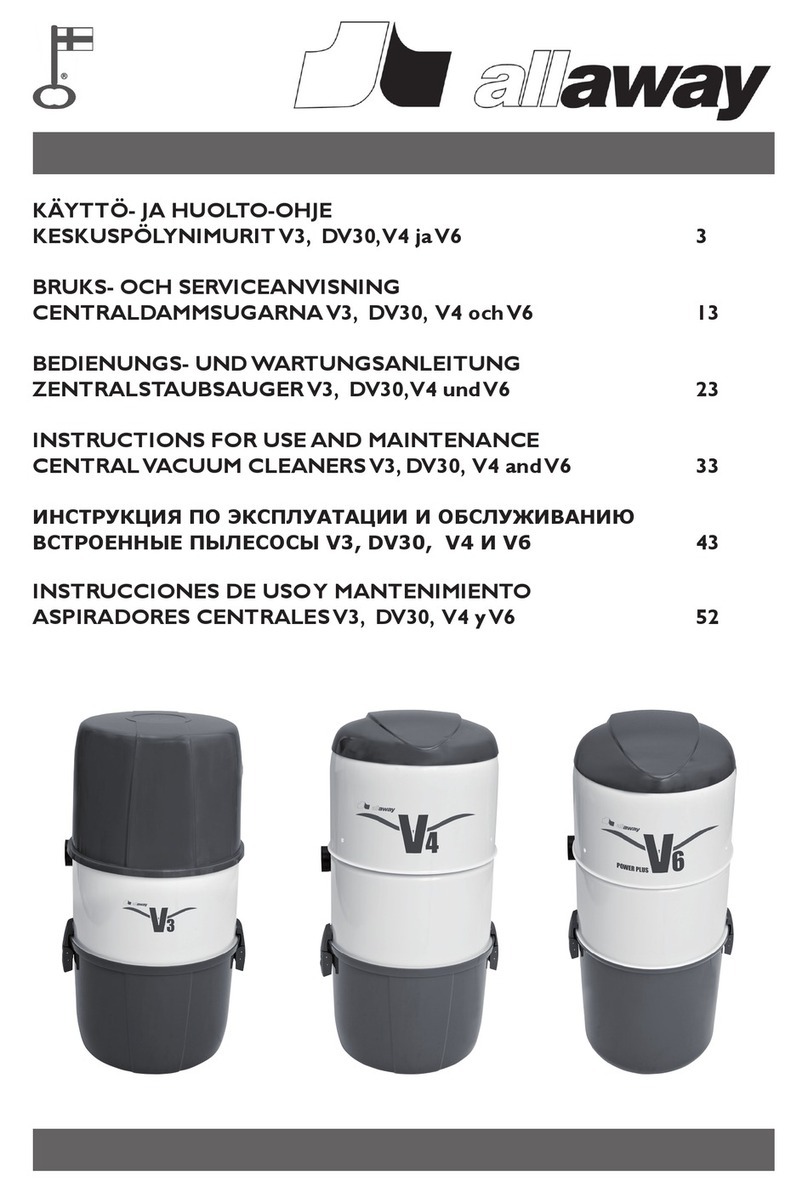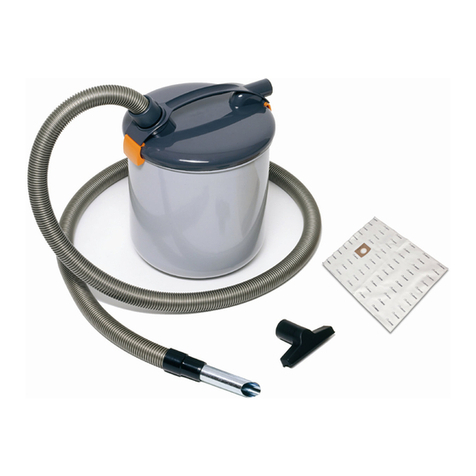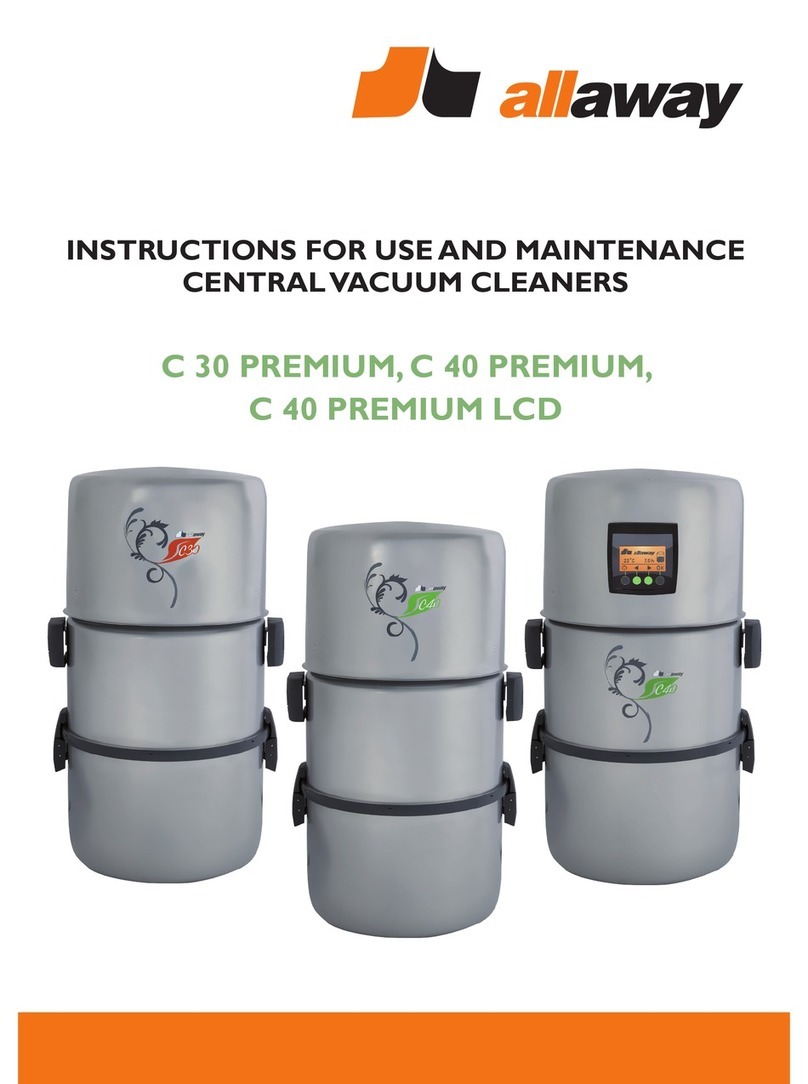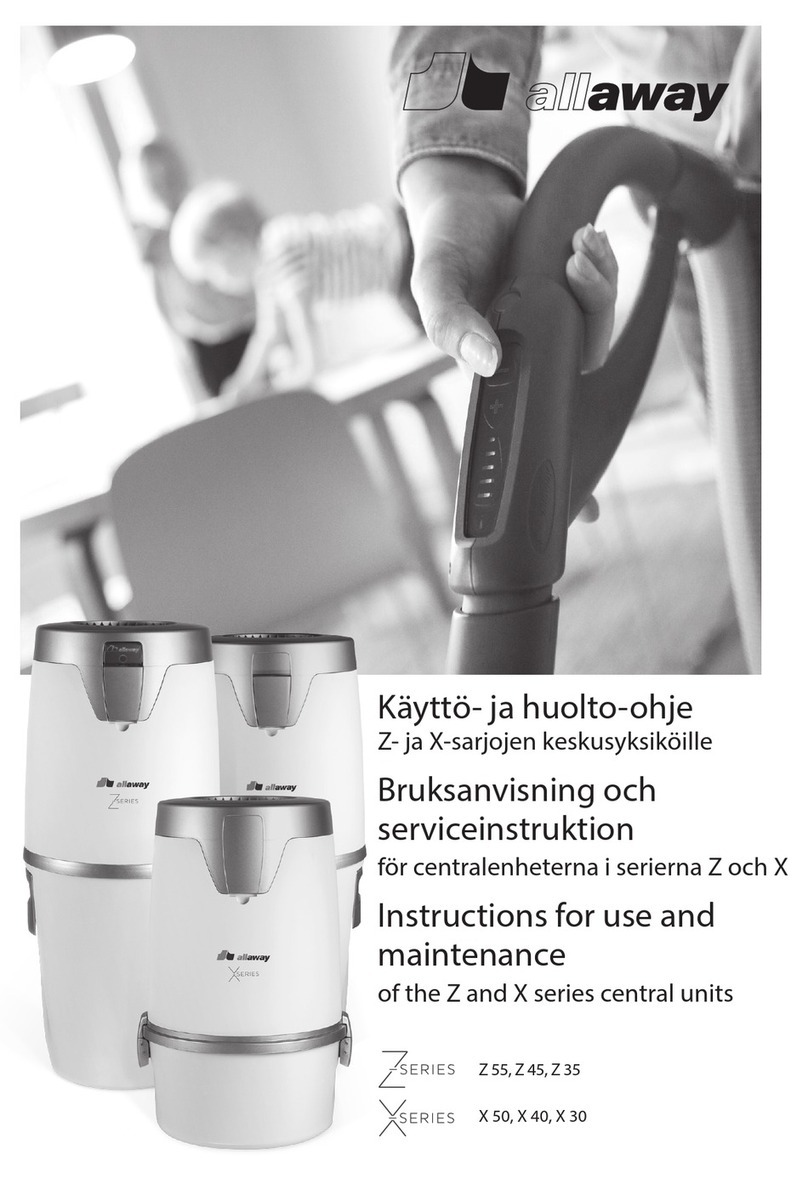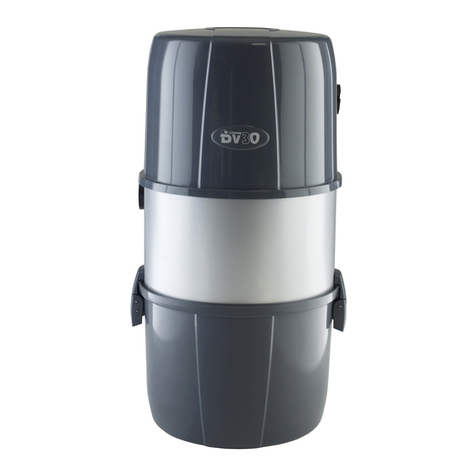8
5.3 What to Do if the Suction Hose Is Damaged
Cut the damaged section out and reconnect the hose using an extension coupling muff (accessory).
If the hose breaks near the hose coupling muff or the handle, detach the muff or handle, cut out the
damaged section and twist the hose coupling muff or handle back onto the hose (the components of
the hose have a left-handed thread).
In suction hoses equipped with a handle start mechanism, the start circuit wires are built into the hose.
The hose cannot be shortened or extended. In case of damage to the hose, contact an authorised
Allaway service dealer.
5.4 What to Do if the Pipe System or the Exhaust Pipe Is Blocked
Empty the dust canister and clean (replace) the lter.
Locate the blockage by sucking strips of kitchen paper through the wall inlets. If the strips of paper end
up in the dust canister, that stretch of the pipe system is clear. Once you have located the blockage,
disconnect the central unit and check that there are no blockages in the coupling hoses. Then use
the suction hose to connect the suction-side coupling hose to a wall inlet along the blocked stretch
(or to the wall inlet closest to the blockage, if the blockage is in the frame pipe). Start the central
unit (see gure 2/3 for starting the central unit with the help of a piece of metal wire), and go to
where the central unit is usually mounted. Block and unblock the suction pipe opening with your
hand to send vacuum shocks to the blocked pipe. If the blockage has not become dislodged within
10-15 seconds, disconnect the central unit from the wall inlet to allow the turbine to get some air
in between and to stop it from overheating. Repeat the process after approximately one minute.
If the blockage cannot be dislodged through suction and you are able to pinpoint its location, it is
worth examining whether the pipe system is easily accessible without having to dismantle too much
of the structure. If the pipe system is accessible, the blockage can usually be removed by opening
a pipe joint.
Never use overpressure, such as compressed air, to try unblocking the pipe system, as overpressure
will cause the pipe joints to become undone.
You can also try dislodging the blockage by inserting a tension spring into the pipe system, taking
care not to damage the pipe joints.
If none of the measures described above are successful in unblocking the pipe system, contact an
authorised Allaway service dealer.
5.2 What to Do if Suction Power Has Dropped
Check that all other wall inlets are closed and that they do not leak.
Check that there are no objects inside the wall inlet that could obstruct ow.
Check that the suction hose is intact and that no objects that could obstruct ow are lodged in
it.
Check that the dust canister is correctly in place and that the sealing materials of the dust canister
are clean and intact.
Check that the dust canister is not full or that the dust bag does not require replacing.
Check that the lter is in good condition.
Check that the pipe system is airtight (see section INSPECTING THE PIPE SYSTEM FOR
TIGHTNESS).


